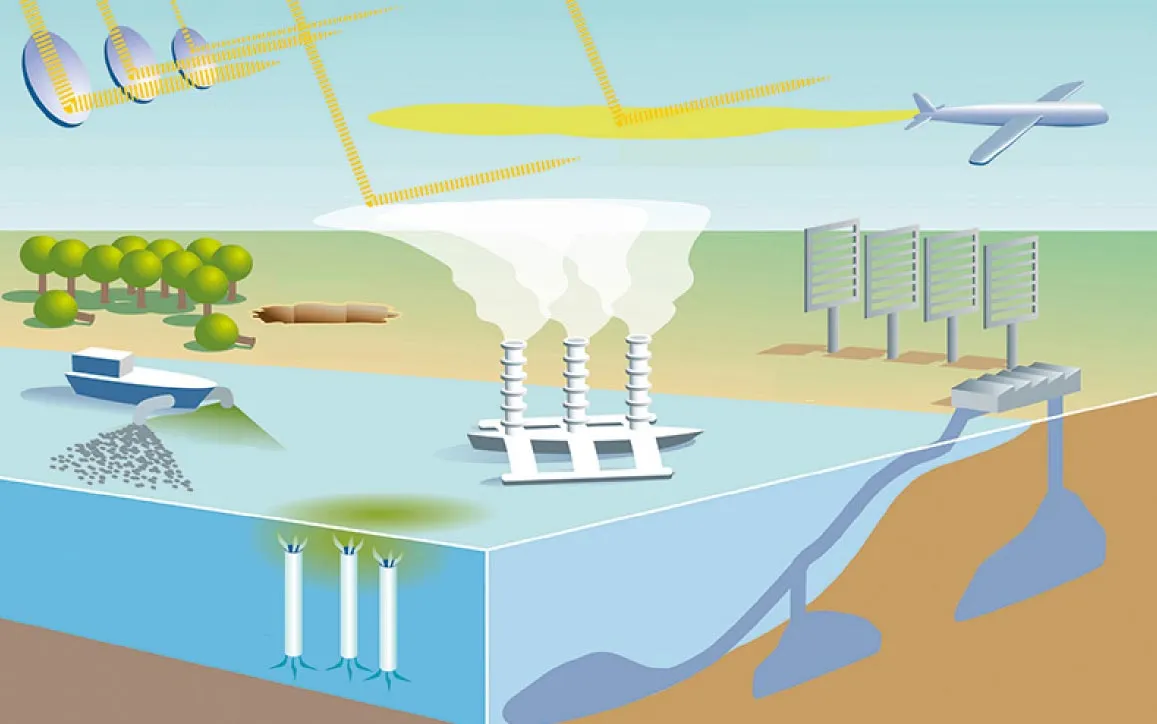Carbon dioxide removal initiatives, such as afforestation and direct air capture technologies, offer a partial solution but are currently outpaced by escalating emissions.
The historic Paris climate agreement initiated a rallying cry from developing nations: “1.5 to stay alive.” This mantra emphasizes the global target to limit the rise in temperatures to 1.5 degrees Celsius (2.8 Fahrenheit) compared to preindustrial levels. Yet, forecasts suggest this threshold may be surpassed within a decade, with the pace of global warming showing scant signs of abatement.
As the world grapples with increasingly severe natural calamities, such as soaring temperatures, unprecedented wildfires, intensifying hurricanes, and encroaching sea levels, attention turns to unconventional methods to curb the escalating climate crisis. Climate engineering, also known as geoengineering or solar climate intervention, emerges as a contentious proposal aimed at deliberately modifying the climate.
Proposed strategies include emulating the cooling effects of volcanic eruptions by dispersing reflective particles into the atmosphere or enhancing the brightness of low clouds over oceans to reflect sunlight back into space.
While these methods offer a potential avenue to swiftly mitigate rising temperatures, significant uncertainties loom regarding their consequences. Moreover, there is a lack of consensus on the ethical and practical implications of embarking on such endeavors.
The intersection of climate change and national security further complicates the discourse. Beyond conventional military threats, the disruption of vital resources like food, energy, and water, coupled with climate-induced migration, poses significant challenges to global stability.
To comprehend the prospective role of climate engineering in addressing these challenges, it’s imperative to grasp the enormity of the climate crisis. Since the onset of the industrial era, human activities have injected an estimated 1.74 trillion tons of carbon dioxide into the atmosphere, precipitating a relentless warming trend.
While curtailing carbon emissions remains paramount, the enduring presence of carbon dioxide necessitates alternative approaches. Carbon dioxide removal initiatives, such as afforestation and direct air capture technologies, offer a partial solution but are currently outpaced by escalating emissions.
In light of this urgency, discussions pivot to the feasibility and implications of climate engineering deployment. Government entities are already exploring potential scenarios, assessing the geopolitical and economic ramifications of such interventions.
However, the prospect of unilateral action raises concerns about the “free driver” dilemma, wherein a single nation or coalition could unilaterally alter global climate patterns, potentially exacerbating tensions and conflicts.
The transboundary nature of climate engineering underscores the interconnectedness of nations, with repercussions transcending geopolitical borders. While some regions may experience benefits, others could face exacerbated risks, accentuating existing inequalities and vulnerabilities.
Amidst these uncertainties, questions abound regarding the desirability and prudence of pursuing climate engineering as a viable solution. While climate models provide valuable insights, they fall short in predicting the complex interplay of geopolitical factors and societal dynamics.
As calls for precaution and deliberation echo on the international stage, the United Nations Environment Assembly in March 2024 saw divergent stances on the issue. African nations advocated for a moratorium on climate engineering, advocating for a cautious approach, while others, including the United States, called for rigorous scientific evaluation before any decisive actions.
In conclusion, while climate engineering presents a tantalizing prospect for mitigating the climate crisis, its implementation entails inherent risks and uncertainties. As policymakers navigate this intricate terrain, informed decision-making backed by robust scientific inquiry is imperative. Climate engineering remains a technology that demands careful consideration, underscoring the imperative for further research and international collaboration in charting a sustainable path forward.
